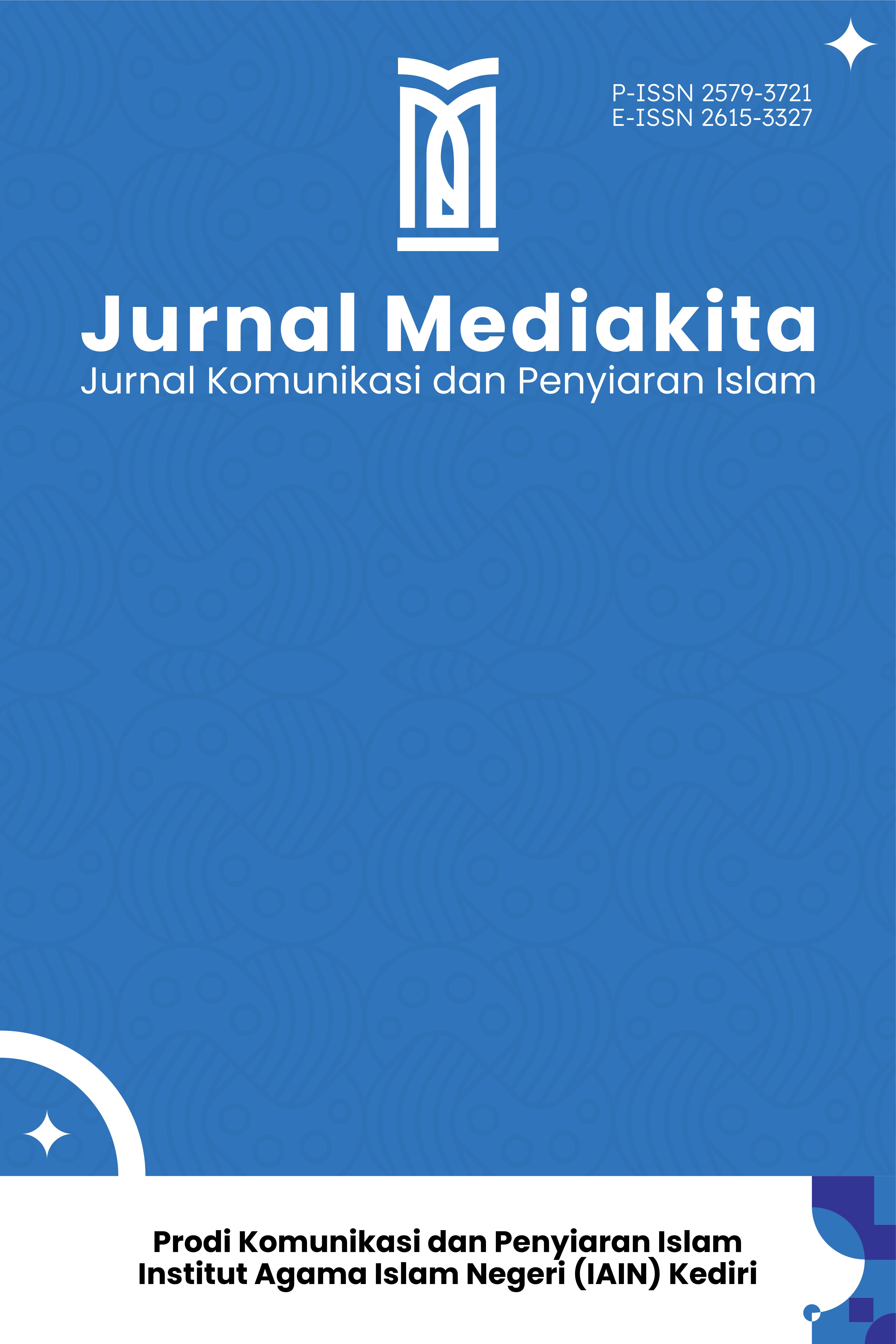Analisis Produksi Siaran Berita CNN Indonesia Newsroom; Studi Hierarki Pengaruh Level Rutinitas Media
DOI:
https://doi.org/10.30762/mediakita.v7i1.792Keywords:
Influence Hierarchy,, Mass Media,, Television Production,, CNN IndonesiaAbstract
This study aims to determine the production process of the news program CNN Indonesia Newsroom on the CNN Indonesia television channel. What are the pre-production, production, and post-production processes like, and how does the routine level of the media affect the program? The methodology used is a descriptive qualitative approach, and data collection is through observation schemes, documentation, and interviews. This study uses a subjectivism perspective because it wants to know the influence of media routines which are subjective through the Hierarchy of Influence approach introduced by Pamela J. and Stephen D. This research tries to see the influence from the level of media routines, namely, audiences, media organizations, and related news sources. with the news program production process. CNN Indonesia Newsroom goes through three stages of production, namely pre-production, production and post-production. CNN Indonesia Newsroom produces media content according to audience criteria so that it is easy to understand and gain insight from the audience. From the side of media organizations, the influence and intervention of the highest ranks of the media is quite large, which can be seen in planning meetings and editorial meetings. News sources are obtained from reporters' suggestions, the planning team, and program requests. Of these three elements, the influence of audiences and media organizations holds a large portion in determining the media products of the CNN Indonesia Newsroom.
Downloads
References
Abdul Halik. (2013). Komunikasi Massa (p. 36). http://repositori.uin-alauddin.ac.id/338/1
Ade Armando dkk. (2011). Media dan Integrasi Sosial Antarumat Beragama. Center for the Study of Religion and Culture (CSRC).
Bungin, B. (2008). Sosiologi Komunikasi (3rd ed.). Kencana.
Gill Branston and Roy Stafford. (2003). The Media Student’s Book. Routledge.
Graeme Burton. (2006). Yang Tersembunyi di Balik Media. Jalasutra.
John W. Creswell. (2016). Research Design. Qualitative, Quantitative, and Mixed Methods Approaches. Sage Publications.
Kusumana, H. S. (2016). Merancang Karya Tulis Ilmiah (4th ed.). PT Remaja Rosdakarya.
Mosco, V. (2019). The Political Economi of Communication.
Pambayun Ellys Lestari. (2012). Communication Quotient. PT Remaja Rosdakarya.
Shoemaker, P. J., & Reese, S. D. (2013). In Mediating the Message in the 21st Century: A Media Sociology Perspective.
Stanley & Dennis. (2009). Teori dasar Komunikasi Massa. Salemba Humanika.
Wibowo, F. (2007). Teknik Produksi Program Berita. Pinus.
Alfafa Iskandar, S. R. (2021). Hierarki Pengaruh Pemberitaan Pindah Keyakinan Deddy Corbuzier Di Detikcom. Virtu: Jurnal Kajian Komunikasi, Budaya Dan Islam, 1(2), 129–137.
Fatmawati, F. (2018). Analisis Produksi Program Berita Indonesia Morning Show di News and Entertainment Television. Profetik: Jurnal Komunikasi, 11(2), 58-73.
Haikal, A., Septian, R., & Ichsan, M. (2018). Memilih Segmentasi Penonton dalam Perencanaan Program Televisi (Studi Siswa Magang SMK 4 Bekasi di BSI TV). Jurnal Pengabdian Kepada Masyarakat, 1(3), 585-592.
Imran, H. A. (2012). Media Massa, Khalayak Media, The Audience Theory, Efek Isi Media, dan Fenomena Diskursif (Sebuah Tinjauan dengan Kasus pada Surat Kabar Rakyat Merdeka). Jurnal Studi Komunikasi Dan Media, Vol. 16 No(1), 47–60.
Khotimah, N. K., & Kushardiyanti, D. (2022). Sensor Penyiaran Televisi Indonesia: Menyoal Muatan Negatif Dalam Konten Siaran Televisi. Mediakita, 6(1), 1–16.
Nurfaiza, U. (2019). Strategi Pengembangan (Lembaga Penyiaran Publik) LPP TVRI melalui Rebranding LOGO Baru: Perspektif Industri Media Islam. Jurnal Mediakita: Jurnal Komunikasi Dan Penyiaran Islam, 3(2). 137-152.
Raharjo, R. S. (2005). Latar Belakang Media Relations Di Media Massa (Analisis Deskriptif Kualitatif Terhadap Kegiatan Media Relations Tvri Yogyakarta Dan Jogja Tv). 09, 27–36.
Virdaus, D. R. (2019). Gaya Komunikasi Dalam Berita Televisi (Produksi Pesan Pada Program Berita “Pojok Kampung” JTV Dan Penerimaan Pesan Di Kalangan Masyarakat Jawa Timur). Mediakita, 3(2), 163–178.
Website
CNN Indonesia | Tentang Kami. (n.d.). Retrieved November 8, 2022, from https://www.cnnindonesia.com/tentang-kami
Program CNN Indonesia TV | Berita Terbaru, Terkini Indonesia, Dunia. (n.d.). Retrieved November 8, 2022, from https://www.cnnindonesia.com/tv/program.











